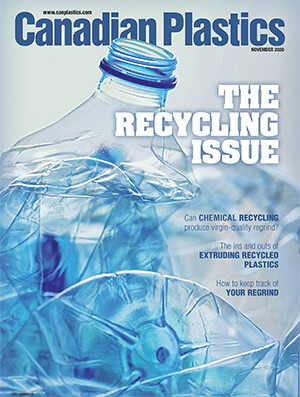
COVID litter: we mapped discarded masks and gloves in 11 countries with the help of citizen science
By Keiron Roberts, Lecturer in Sustainability and the Built Environment, University of Portsmouth; Ian Williams, Professor of Applied Environmental Science, University of Southampton; and Simon Kolstoe, Reader in Bioethics and University Ethics Advisor, University of Portsmouth
COVID-19 Materials RecyclingWe found strong links between mask litter and national laws or policies requiring mask wearing.

Photo Credit: Adobe Stock/Igor
If at some stage during the COVID pandemic you’ve had a face mask mysteriously disappear from your pocket, you’re not alone. From March 2020 countless discarded blue and white masks started appearing around the world.
While face masks are an important protective measure against COVID-19, it quickly became clear that face mask litter was going to be a by-product of the pandemic.
Keen to study the scale of this issue, but unable to travel far from our locked-down homes, we decided to use data gathered through a citizen science app called Litterati. This app asks people around the world to record any litter they find.
In our new study, published in the journal Nature Sustainability, we analysed data on mask and glove litter from September 2019 (before the pandemic) up to October 2020. We looked at 11 countries, including the UK, and compared the litter trends with each country’s approach to dealing with COVID-19.
While we expected to see a rise in mask litter, we were surprised by how much it rose. Across the 11 countries in our study there was an almost 9,000% increase in masks as a proportion of all litter from September 2019 to October 2020 (over 80 fold).
We also found strong links between mask litter and national laws or policies requiring mask wearing.
Our findings can perhaps be best understood if we consider three key periods.
January to March 2020
As countries grappled for adequate personal protective equipment, the most common guidance was to socially or physically distance from other people.
During this time mask and glove litter was low, but glove litter slowly started to rise first.
March to May 2020
On March 11 2020 the the World Health Organization (WHO) officially declared COVID-19 a global pandemic. This was also the period during which some of the the most severe lockdowns were implemented.
Mask litter started to increase as countries began to recommend, but often did not require, mask use in public. From March to April mask litter doubled, while glove litter jumped 12-fold during the same period. We think this is due to people associating touch with the spread of the virus, and masks not being widely accepted yet.
June to October 2020
The WHO officially recommended the use of masks in public on June 5 2020. This followed the relaxation of many of the most severe lockdown measures, and an increase in people getting out and about.
Mask litter increased dramatically during this time, but interestingly, glove litter began to decrease. This change was probably due to increasing public appreciation that the virus is spread by airborne droplets rather than touch, coupled with an increase in the social acceptability of wearing masks.
Compared to the other ten countries in our study, the UK had the greatest proportion of masks as litter, increasing from 0% in September 2019 to over 6% in August 2020. The UK also showed one of the longest sustained increases in glove litter from April to October 2020.
Nations less impacted by COVID-19 lockdowns, and which introduced mask laws later (such as New Zealand and Sweden), recorded the lowest proportion of mask and glove litter.
Our COVID-19 litter fingerprint
Although masks and gloves only made up a small proportion of overall litter, our study (and others like it) have highlighted just how quickly new items like masks can add to substantial litter problems.
In addition to being an eyesore, face masks in particular can have more serious impacts when not disposed of properly. In the short term, for example, face mask litter can act as a potential viral vector, and therefore pose a risk for COVID transmission.
In the medium term mask litter can be eaten by animals, or entangle or choke them, certainly causing harm and potentially killing them. Masks and other litter can also smother smaller organisms and plant life.
In the long term, masks manufactured from plastic materials can persist in the environment for many years, breaking down into microplastics and potentially entering the food chain.
What now?
With the omicron variant forcing nations to reintroduce restrictions and enforce mask wearing again, the problem of pandemic-related litter is not behind us. For example, as part of England’s move to plan B, face masks are once again compulsory in most indoor public venues
And although they were not previously a common feature in western nations, it’s likely that face masks will continue to be used even beyond the COVID-19 pandemic as people realise their role in preventing the spread of respiratory diseases.
There is therefore a dual responsibility falling to governments and individuals when it comes to masks and other pandemic-related litter. If governments require the use of masks, they need to ensure adequate education around disposal, as well as the availability of facilities like bins to help people dispose of litter appropriately.
At the same time, individuals need to take personal responsibility to dispose of waste. We can’t let one global problem (COVID-19) make another global problem (littering) worse.
This article is republished from The Conversation under a Creative Commons license. Read the original article.
